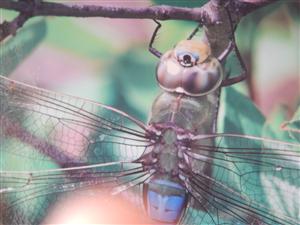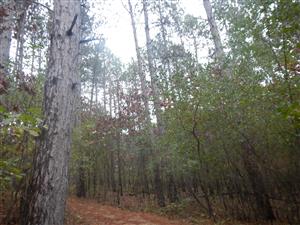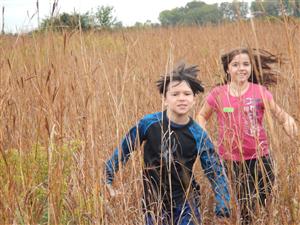Program Descriptions
-

These programs will be adapted to accommodate the particular age andabilities of your group. These programs focus on the science standards:
Life Science, Physical Science, Earth and Space Science, and
Nature of Science and Engineering.
Animal Adaptations
Why does a male deer have antlers? Why does a wild turkey have 5,000 or more feathers. What does a painted turtle do in the winter to survive? Learn about specific adaptations that animals at Belwin have to help them survive in their habitat and in our climate of Minnesota.
(All seasons ~ All ages)
Fall Lab
What is changing at Belwin when the temperature begins to fall? Discover why Minnesota has different seasons. Learn about photosynthesis and changing leaf colors. Watch as animals ready themselves to hibernate or migrate for the winter. Maybe you will see a hawk riding the thermals.
(Fall ~ All Ages)
 Winter Lab
Winter Lab 
What happens at Belwin when the temperature falls below freezing? Explore the frozen
world looking for tracks of animals that tell a story. Cut a hole in the pond and see what is under the ice. Learn about the three states of matter and how snow is made. See evidence of how evergreens are adapted for winter. Try out kicksledding, skiing, or snowshoeing while looking at the beauty of nature around you.
(Winter ~ All Ages)
 Spring Lab
Spring Lab Did you hear the call of a bluebird returning to Belwin? Discover how frogs and turtles emerge from the wetlands. Explore the buds on trees and look for animal homes. Learn how to tap a maple tree to catch some sap. Walk the prairie edge and look for greening of the valley. Hike a muddy trail looking for the first trillium flowers.
(Spring~ All Ages)
Raptors
Explore the world of hawks, eagles, and owls learning about their habitat, flight patterns, adaptations, structure and function. Use binoculars to track red-tailed hawks. Dissect an owl pellet and sort the bones found inside. (Spring and Fall ~ Grade 3 - Transition)

Forest Biome

What trees are deciduous and what are coniferous? Take a hike through forest areas to find what trees and animals live there. Learn how trees grow and mature. Collaborate with friends to identify leaf shapes and tree types. Count the rings on a stump to find the age of a tree. Do leaf or bark rubbings. Try a forest art project.
(Fall and Spring ~ All Grades)
Minnesota Plant Hike

Can a root really reach 15 feet deep into the soil? Learn the parts of a plant and what plants need to survive. Take a hike through oak savannas, tall grass prairie, and deciduous forests to find evidence of how different plants are adapted to their biomes.
(Fall and Spring ~ All Ages)
Pollinators
Why does a male deer have antlers? Why does a wild turkey have 5,000 or more feathers. What does a painted turtle do in the winter to survive? Learn about specific adaptations that animals at Belwin have to help them survive in their habitat and in our climate of Minnesota.
(Fall and Spring ~ All ages)
Seven Bats of Minnesota
Scary or awesome? Learn how bats are part of the Minnesota landscape. Find out characteristics of bats; wingspan, weight, and coloring. Play an echolocation game with your friends. Hunt for insects and return to your bat cave. Explore bat habitats and learn three things bats need in order to live. Design your own bat.
(Any season ~ All Ages)
Wetlands
Can you catch a diving beetle or a tadpole? Go dipping with a net from our dock into a wetland. Learn about aquatic species and their watery habitat. Use a microscope to look at your creatures up close. Check the turtle trap and try to touch a painted turtle. Learn about the water quality and test the pond and stream.
(Spring and Fall ~ All Ages)
Back in Time

Students will be introduced to the people and animals of the Ice Age in Minnesota. Giant Beaver, Ground Sloths, Mammoths and Saber Tooth Cats, that once roamed our neighborhoods. What happened that caused these animals to now be extinct? What were the people like that coexisted with these animals? Students will participate in uncovering and identifying artifacts.
(Spring and Fall ~ Grades K-5, Hike is on unpaved trail)
Water Cycle
Can you drink dinosaur tears? Learn about the water cycle and how water is being constantly recycled on our planet. Become a water molecule and pass through the water cycle from groundwater to a cloud to a plant. Explore the three states of matter: liquid, solid, gas. Learn ways to protect our precious water at home and at school.
(Fall and Spring ~ All Ages)

Stories in Stones
Students will explore the trails for pebbles, stones, and boulders that will tell us something of the history of our area. What types of rock were here before the dinosaurs? Learn to identify the three types of rock and their part in the rock cycle.
(Spring and Fall ~ Grades 3 - Transition)
Nature Investigators
Ready, set, go! Use all your senses to find plants, animals, and specific natural phenomena on a nature hike. Students will explore the trails keeping track of their observations by playing nature Bingo and using magnifying glasses.
(All Seasons ~ Grades K-3)

Insects
What is that buzzing by your head? Learn about insect body parts and how they are adapted to life in each of Minnesota’s biomes. Use nets to capture terrestrial and aquatic insects to scrutinize up close under a microscope. Learn about insect metamorphosis and life cycle. Make your own insect to take home.
(Fall and Spring ~ All Ages)
Belwin Archeology
What was life like 100 years ago? Were there televisions? phones? computers? Hike to the old Souther Farm to explore the archeological remains. Measure the foundation dimensions and look for clues about what life was like a century ago. How has nature changed the farm over time?
(Spring and Fall ~ Grades 4-12 and Transition, Hike to farm is 2 miles, unpaved path)
Calling All Birds
Spend the day observing birds as they stake out their territory, build nests, search for food, attract a mate, or simply pass through our area. We will learn the anatomy of birds and how birds have adapted to survive here in Minnesota. We will learn to identify a number of birds by sight and sound.
(All Seasons ~ All Ages)

Prairie Lab
What makes a prairie? Discover the plants and animals that call this ecosystem home. Learn about how prairies were important to our Minnesota history. Explore the Kettlecamp Prairie looking for insects, grasses, flowers, birds, and animals. Record soil types, temperature, and wind speed.
(Spring and Fall ~ All Ages, Hike to prairie is 2 miles, unpaved path)
Field Study
Do an in-depth study of a specific animal that lives at Belwin (owl, turtle, deer, otter, monarch butterfly, wild turkey, or squirrel). Use a variety of techniques to discover where the animal lives and how it is adapted to Minnesota.
(All Seasons ~ All Ages)
Nature Photography
What do you see when you hike the trails at Belwin? Use a digital camera to capture a close-up of a mullein plant or the view from the tower. Take photos on the trails to document your day at Belwin. Choose your best and print a photo to write about. Upload some of your other photos to the Belwin Outdoor Science website to view again back at your school.
(All Seasons ~ Grades 6-12 and Transition)
Contact Cathy Smith, Special Education Coordinator for more information:
651-744-7968 or cathy.smith@spps.org




